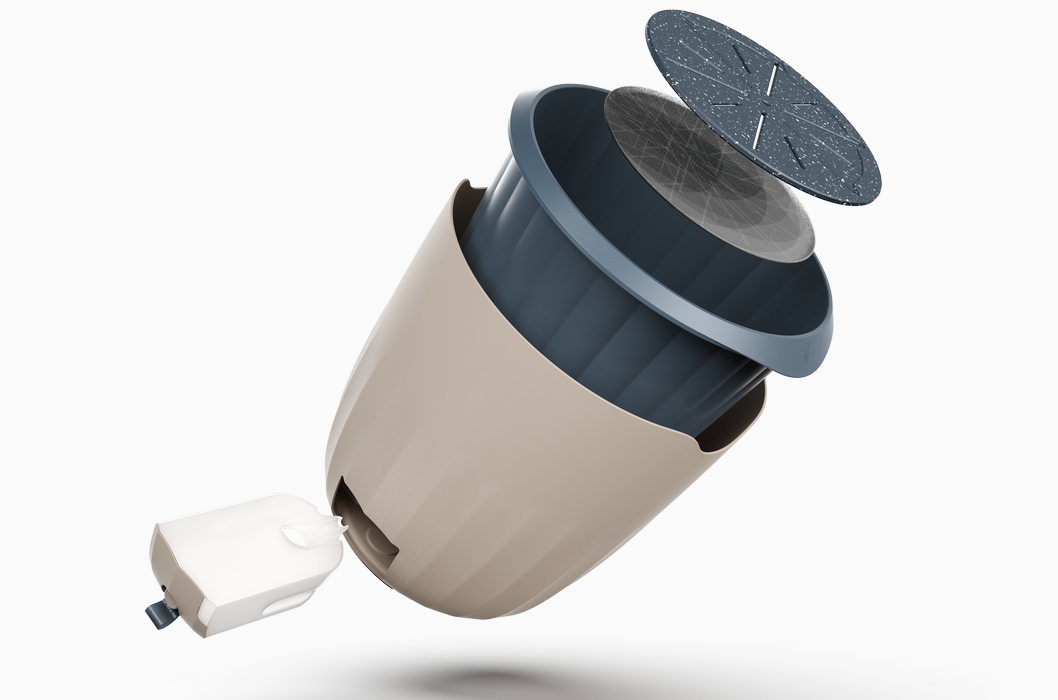For anyone looking to bring a product to market, understanding the transformative potential of the Circular Economy is a must. By leaving the traditional “take-make-waste” approach at the door, we can forge a system that champions resource efficiency, minimises waste generation, and fosters sustainable growth.
There’s a pressing need for a cultural shift towards a Circular Economy, as our current consumption patterns often lean towards a disposable mindset. We must move away from a purely consumer-based economy to one that values and respects the environmental impact of every product we use daily. This shift is not just desirable but essential for long-term sustainability.
Redefining Manufacturing & Unleashing the Power of Remanufacturing
Manufacturing holds a pivotal role in shaping both our economy and our environment. To fully embrace the circular economy, we must redirect our focus towards waste reduction in manufacturing processes. Remanufacturing emerges as a pivotal practice. Instead of discarding used products or components as waste, remanufacturing involves refurbishing or rebuilding them to their original specifications. Product designers already play an integral role in this process through repair, remanufacture, recycling, renewing materials, and ensuring durability.
At DA, we firmly believe in creating products that withstand the test of time and foster emotional attachment. Our designs are meant to be cherished and passed down through generations. By prioritising durability and repairability during the product development phase, we not only minimise waste but also contribute to the conservation of valuable resources.
Understanding governmental focus on circular economy initiatives is also crucial. For instance, the Environmental Protection Agency’s (EPA) remanufacturing fund provides support for businesses engaged in sustainable manufacturing practices. Establishing symbiotic relationships between businesses can also yield innovative solutions. For example, a steelworks facility situated near a hospital could utilise excess heat from the steel production process to sterilize medical equipment.
While product design and manufacturing are central, the principles of the circular economy extend beyond physical products. This concept encompasses various sectors and industries, including energy, transportation, agriculture, and waste management. A holistic approach entails reimagining processes and systems across these sectors to minimise waste generation and maximise resource efficiency.
The Impact of New EU Laws and Sustainable Development Goals
Recent developments in the European Union highlight a significant step towards a circular economy. New laws mandate traceability and require companies to assess their environmental impact, aligning closely with the EU Sustainable Development Goals. Goal #12 specifically emphasizes responsible consumption and production, urging us all to be more accountable and transparent about how resources are used and products are manufactured, repaired, and disposed of.
Creating a Sustainable Legacy
Adopting a circular economy mindset requires recognising the interconnectedness of every aspect of production and consumption. Are we inadvertently creating future landfill sites? By prioritising resource conservation and waste reduction throughout the lifecycle—from design to disposal—we can build strategies that promote sustainability.
Accountability and transparency in resource use, manufacturing, repair, and disposal are essential for responsible consumption and production. Embracing practices like reuse, repair, remanufacturing, and sustainable disposal methods are crucial steps towards minimising environmental impact and creating a sustainable legacy.
Embracing the circular economy isn’t just an ethical imperative; it’s an opportunity for innovation. By rethinking traditional linear models, we can unlock the full potential of a circular economy where waste becomes obsolete. This comprehensive approach drives sustainable growth while minimising environmental impact.
Recommended reads:
👉 Going global with Sustainable Development Goals
👉 Sustainable Development Goals (SDGs) as a Framework for Corporate Social Responsibility (CSR)
👉 2030 Agenda for Sustainable Development and the Sustainable Development Goals

